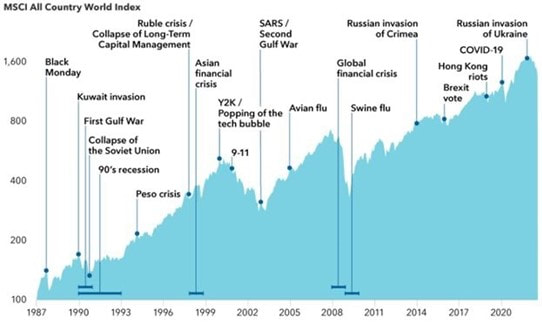|
Central banks continue to be in the spotlight. Over the past months, it is hard to find a central bank that has not raised interest rates at least once. Inflation remains at four-decade highs in most countries, despite the measures taken by central banks so far. The Fed raised interest rates by another 75bps this month and maintains its stance to aggressively combat inflation. This led the 2-year Treasuries to surge above 4%, for the first time since before the global financial crisis, and increases the likelihood of a recession as well as potentially sharply declining equities. The latest hike increased the federal fund rate to 3% - 3.25%. The ECB also raised its interest rate by 75bps in September, while the Bank of England increased its rate by 50bps. The ECB’s rate is now at 1.25% and the UK’s is at 2.25%. Switzerland also raised its rate by 75bps which brings it into positive territory as the last country in Europe. In the middle East, Saudi Arabia, the UAE, and Qatar follow the Fed with their 75bps hikes as well. Across the developed countries, Japan remains the last country with currently negative rates at -0.10%. September 2022 has also been highly relevant for the currency market. The dollar has strengthened substantially over the year. Compared to the Euro, it appreciated from around 0.9$/€ in 2020 to 1.03$/€. The British Pound declined strongly. The latest tax cut in the UK is threatening even higher inflation and will force the BoE to act more aggressively in tightening. After the announcement, the Pound dropped below 1.1$/£, and some speculate that the Pound could fall below parity to the USD. The Japanese Yen also experienced substantial movements, as the country is buying Yen again for the first time in nearly a quarter century. In spite of the negative developments of equities in 2022 and their even more grim prospect, equities are doing great on a historical scale. Figure 1 shows the growth of global equities with the impact of several crises
*|MC_PREVIEW_TEXT|*
Comments are closed.
|
|
|
Stone Mountain Capital LTD is authorised and regulated with FRN: 929802 by the Financial Conduct Authority (‘FCA’) in the United Kingdom. The website content is neither an offer to sell nor a solicitation of an offer to buy an interest in any investment or advisory service by Stone Mountain Capital LTD and should be read with the DISCLAIMER. © 2024 Stone Mountain Capital LTD. All rights reserved. |









 RSS Feed
RSS Feed
